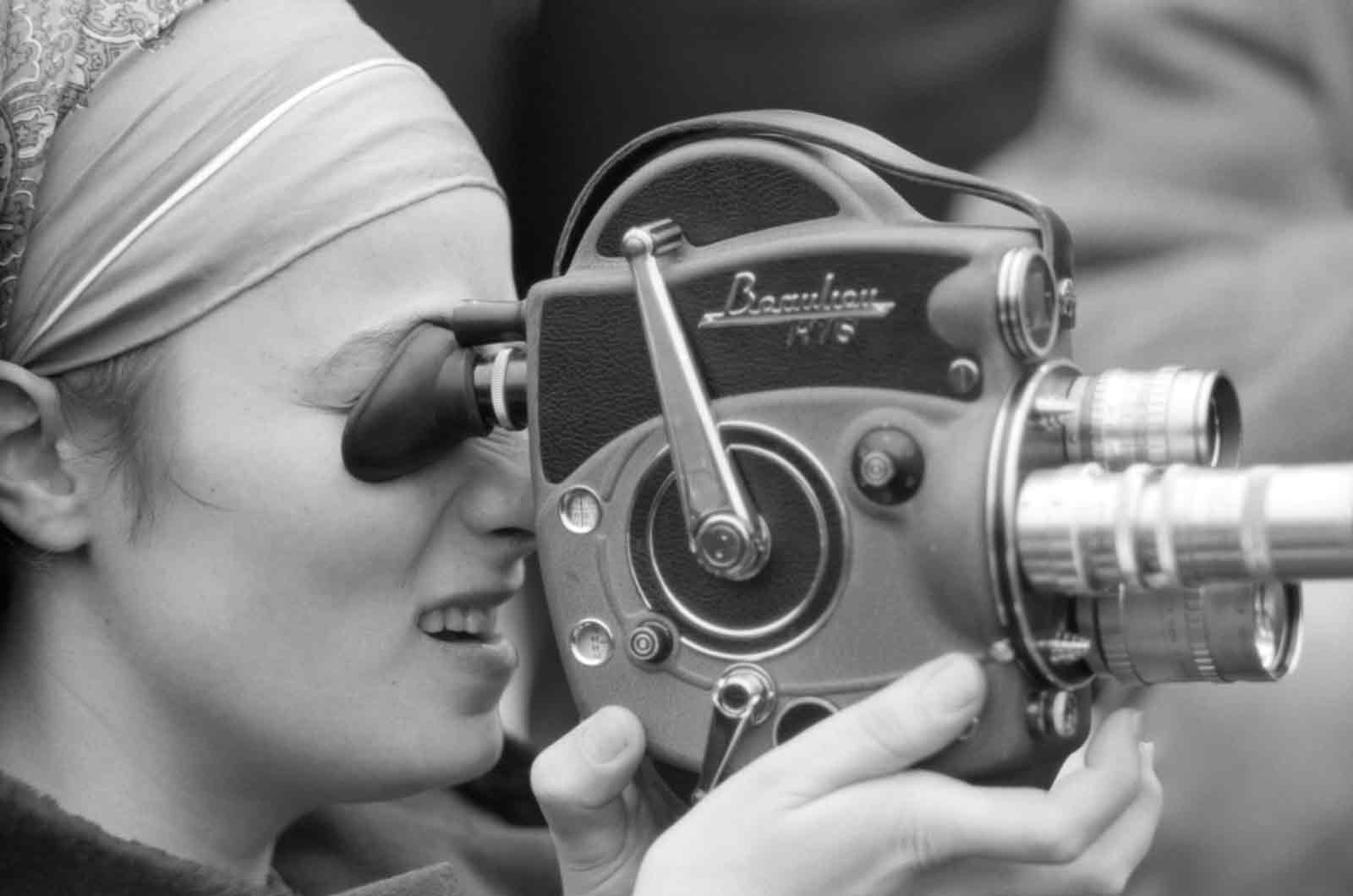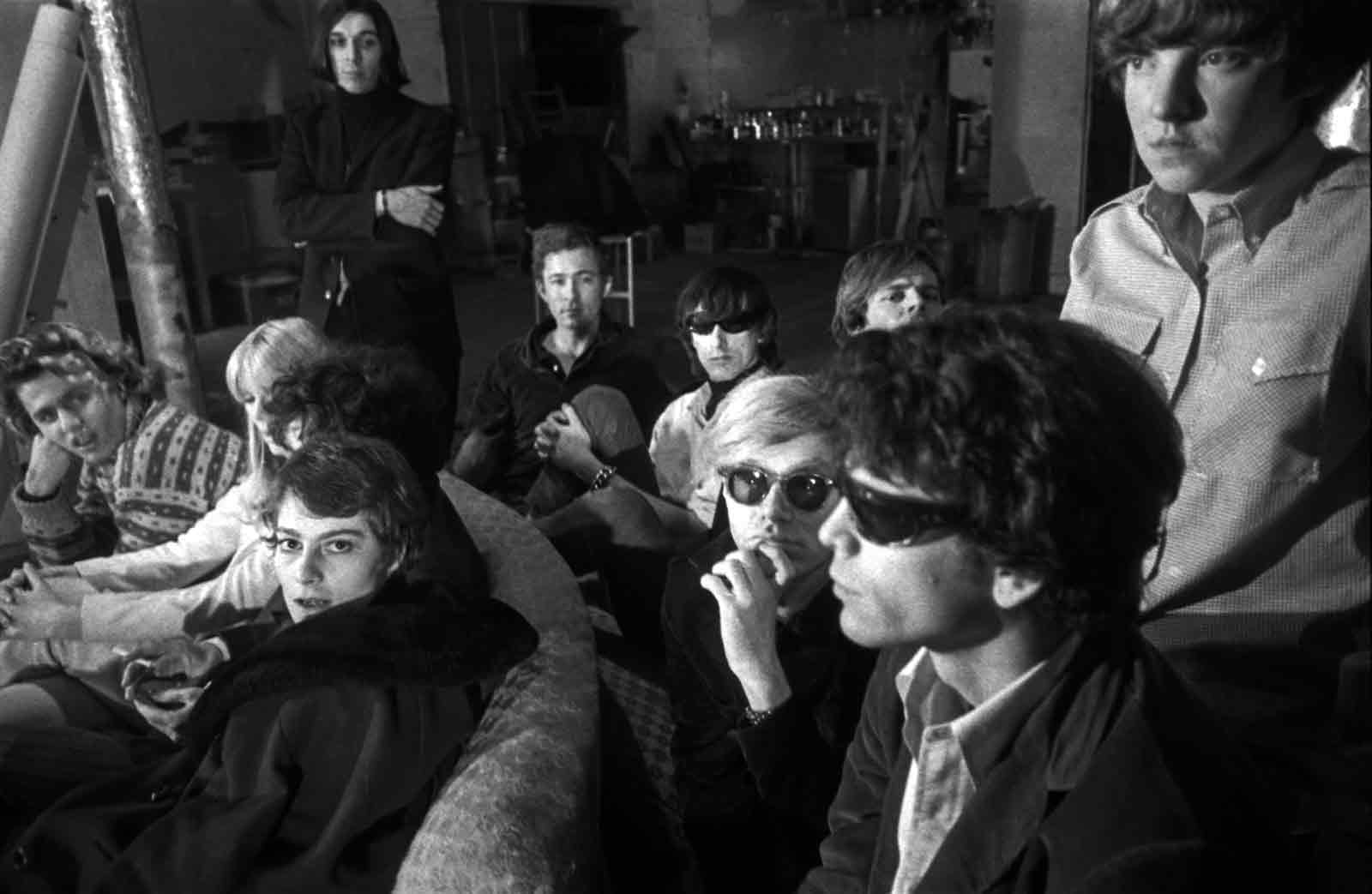Barbara Rubin (1945–1980) may have been something less than a great artist, but she was also something more. Rubin was zeitgeist-made material, a young woman who embodied her historical moment in the process of working out a unique destiny.
In earlier centuries and perhaps even this one, Rubin might have been understood to be a woman possessed. An agitator and a mystic whose friends and associates included Bob Dylan, Andy Warhol, and Allen Ginsberg, Rubin made scenes the way other people made movies—although she did make those as well. Notably, there was her sensational, genitally confrontational Christmas on Earth (1963–1965), shot while she was still in her teens. This bleached black-and-white, trippy tangle of naked bodies, with men posing like Greek statues, women painted to suggest paleolithic fertility goddesses, and anonymous fingers probing bodily orifices in mega close-up, was mind-boggling then. It remains so today.
Rubin was a wild child and a force of nature whose drug-fueled trajectory through the Sixties counterculture is the subject of Chuck Smith’s new documentary Barbara Rubin and the Exploding New York Underground, as well as of the latest—and, most likely, the last—issue of Film Culture, the magazine Jonas Mekas (1922–2019) founded in 1955, its cover emblazoned with “The Legend of Barbara Rubin.”
Two women, the film critic Amy Taubin—a close friend of Rubin’s, as was her then husband, the playwright Richard Foreman (also interviewed)—and the film scholar Ara Osterweil, young enough to have been Rubin’s daughter, are particularly cogent regarding the significance of her work. The movie is framed by Mekas, who clearly loved Rubin and, more than anyone else, was responsible for drawing attention to Christmas on Earth in the Sixties, as well as keeping her memory alive thereafter. It is gratifying that he lived long enough to see Smith’s finished film.
Mekas and Rubin were mutual apostles. They first met soon after her discharge from the sanitarium where, whether for obesity or rebellious behavior, she had been placed by her hitherto permissive parents, a leftwing, middle-class Jewish couple from Cambria Heights, Queens. As can happen in such institutions, the seventeen-year-old Rubin was fed diet pills and introduced to a variety of other psychoactive drugs before she gained her release. Once at liberty, she found her way to the Film-Makers’ Cooperative then located in Mekas’s loft on Park Avenue South, the epicenter of underground movies.
Using a weekly column in the Village Voice to champion a “New American Cinema” of independently made, wildly subjective, purposefully transgressive, and formally radical films, Mekas maintained that these movies would change the world. Rubin took him at his word. Her arrival on the scene coincided with the first screenings of Flaming Creatures. Closely involved in publicizing Jack Smith’s sensational, soon-to-be-banned film—most simply described as an alternately manic and lackadaisical transsexual orgy staged on a Lower East Side rooftop, Rubin herself caught fire. Chuck Smith’s film amply documents the wild rumpus that Mekas and Rubin provoked in December 1963 when they brought Flaming Creatures to the influential experimental film festival in Knokke-le-Zout, Belgium which, shocked by the film’s nudity and artfully primitive style, refused to let it be shown.
By then, Rubin had already begun her own version of Flaming Creatures, Christmas on Earth. When the movie was completed in 1965, Mekas, who had lent her his personal 16mm camera, was moved to poetry:
A woman; a man; the black of the pubic hair, the cunt’s moon mountains and canyons. As the film goes, image after image, the most private territories of the body are laid open for us. The first shock changes into silence, then is transposed into amazement… A syllogism: Barbara Rubin has no shame; angels have no shame; Barbara Rubin is an angel.
Rubin was also an angel in the sense of a self-appointed guardian. As the underground’s resident baby-boomer, she helped rejuvenate a slightly older avant-garde; through Mekas, Rubin met Ginsberg and Warhol, and introduced both to Bob Dylan. Flying with Ginsberg to London, she helped organize the International Poetry Incarnation at Royal Albert Hall in June 1965. And after she heard the Velvet Underground rehearse in a Lower East Side garret, she dragged Warhol and his entourage down to a West Village dive where the men in the band were playing with bare chests and painted faces. For a time, Rubin joined the Warhol entourage and, until she was driven away by Paul Morrissey (her antithesis in almost every way, politically conservative, sexually reticent, attached to cinematic conventions), she was a ringleader, deserving much of the credit for orchestrating the Warhol mixed-media extravaganza initially known as the Exploding Plastic Inevitable.
Ever more manic, Rubin imagined a sequel to Christmas on Earth, writing to Walt Disney to request financing for a spectacular children’s movie that she planned to film in Ireland. Besides the Beatles, the Rolling Stones, Bob Dylan, and Frank Sinatra, her feature would star Tinker Bell, Dumbo, and the Seven Dwarves. Was she delusional? Were the times?
Advertisement
As the Sixties sped on, Rubin’s spiritual calling became ever more evident. She took to dressing as a nun. The costume was ironic, of course, but the footage Smith found showing her whirling about as part of an entranced Hare Krishna procession, suggests something else. According to one of Smith’s interviewees, Rubin was also studying Kabbalah, something forbidden to women in traditional Judaism.
Her last organizational effort was the creation of East Hill Farm, a rural commune in upstate New York, founded early in the apocalyptic year 1968 with funding from Ginsberg. Things did not turn out the way she wanted. Rubin imagined that she would have a child by Ginsberg. He was not interested.
Devastated by his rejection—and, according to some, also traumatized by the assassination of Robert Kennedy—she took refuge in an ultra-orthodox Jewish orphanage. There, she was born again. Soon after, Rubin joined a Hasidic sect, married within it, divorced, and married another Hasidic man. Moving to France with her second husband, a painter, she left her films with Mekas to destroy or not—and of course he did not. In 1980, she died after giving birth to her fifth child. A few years later, he again showed Christmas on Earth, arranging a belated memorial screening at the downtown Collective for Living Cinema.
The very notion of an artistic career is antithetical to Rubin’s achievements unless the word is used to connote something careening out of control. As documented in Smith’s film, two specific accomplishments stand out—the making of Christmas on Earth between 1963 and 1965, and the pioneering of film- and music-driven mixed-media extravaganzas that she co-organized between 1966 and 1967. The artist and scholar Ara Osterweil makes the point that Rubin more or less invented the idea of film as installation and projected film as a performative medium.
Christmas on Earth is a landmark yet to be assimilated in any existing canon. Still, Rubin’s great accomplishment was not so much making the movie as making it happen—the film is the residue of her living. Even as she was galvanizing Mekas, Warhol, Ginsberg, and others, contemporaries across the continent were similarly experimenting with mind-altering drugs and integrating the theatrical into everyday life. Rubin was what the radical art-activists of the Diggers of San Francisco called a “life-actor.” As Smith’s film suggests, her story may be her most compelling creation.
At least until she took off for France, Rubin’s life was always a work in progress. It’s notable that Christmas on Earth had no fixed form. Rubin might project two reels side-by-side or superimposed, and that superimposition might involve one reel being inverted or cut into four frame-shards and spliced back together at random, and then projected on the Warhol Factory’s silver ceiling. When she could, she projected one reel inside the other—physically enacting the film’s interest in penetration while creating a sumptuous play of texture and scale.
Rubin’s accomplishments can all be seen as way stations in a search for transcendence. Was she a saint who finally found redemption? Or, in secular terms, did this incandescent woman, unschooled and hyperactive, find a protective community and self-medicate her way to some sort of serenity? In the face of such questions, Rubin remains remarkably elusive. Although her image appears throughout Smith’s movie, she never looks quite the same. It’s as though Rubin, forever going through changes, was too quick for the camera.
Barbara Rubin and the Exploding New York Underground opens at the IFC Center in New York on May 24; Los Angeles and San Francisco openings are scheduled for June 14




